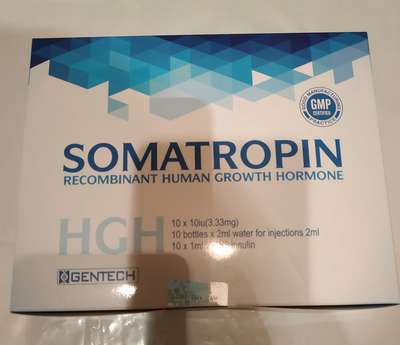Instruction for use: Nazol Baby
I want this, give me price
Trade name of the drug – Nazol® Baby
ATX code R01AA04 Phenylephrine
Pharmacotherapeutic group:
Decongestant agent - alpha-agonists [alpha agonists]
Decongestant agent - alpha-agonists [decongestant]
The nosological classification (ICD-10)
J00 Acute nasopharyngitis [runny nose]
Viral rhinitis, Inflammation of the nasopharynx, Inflammatory diseases of the nose, purulent rhinitis, Nasal congestion, Nasal congestion with colds and flu, The difficulty of nasal breathing, The difficulty of nasal breathing for colds, Difficulty in nasal breathing, Difficulty in nasal breathing in colds, nasal, hypersecretion, cold, ARI with rhinitis phenomena, coryza, Acute rhinitis of various origins, Acute rhinitis with thick purulent mucous exudate, Acute nasopharyngitis, Swelling of the mucosa of the nasopharynx, Rhinitis, rhinorrhea, Infectious-inflammatory diseases of ENT organs, heavy cold, rhinopharyngitis, nasopharyngitis
J01 Acute sinusitis
Inflammation of the sinuses, Inflammatory diseases of the paranasal sinuses, Purulent inflammation of the paranasal sinuses, Infectious-inflammatory diseases of ENT organs, Infection of the sinuses, Combined sinusitis, Exacerbation of sinusitis, Acute inflammation of the paranasal sinuses, Acute bacterial sinusitis, Acute sinusitis in adults, Subacute sinusitis, acute Sinusitis, sinusitis
J06 Acute upper respiratory infections of multiple and unspecified
Frequent colds viral diseases, Infections of the upper respiratory tract, Acute respiratory disease influenza character, for colds Pain, Acute colds,Cold, respiratory infection,Seasonal colds, Pain in infectious and inflammatory diseases of the upper respiratory tract, Bacterial infections of the upper respiratory tract, Bacterial respiratory infections, Viral disease of the respiratory tract, Viral respiratory tract infections, Inflammatory disease of the upper respiratory tract, Inflammation of the upper respiratory tract disease, Inflammation of the upper respiratory tract illness with difficult sputum, Inflammatory airway disease, Secondary infections with colds, Shortness of sputum in acute and chronic respiratory diseases, Upper respiratory tract infection, Infections of the upper respiratory tract, Respiratory Tract Infections, Infections of the respiratory tract and lungs, Infectious-inflammatory diseases of the upper respiratory tract, Infectious-inflammatory diseases of the upper respiratory tract and ENT-organs, Infectious-inflammatory diseases of the upper respiratory tract in children and adults, Infectious-inflammatory diseases of the upper respiratory tract, Infectious inflammation of the airways,respiratory infection, Qatar upper respiratory tract, Catarrh of the upper respiratory tract, Catarrhal disease of the upper respiratory tract, Catarrhal symptoms of the upper respiratory tract, Coughing with a cold, SARS, ARI, ARI with rhinitis phenomena, Acute respiratory infection, Acute infectious and inflammatory disease of the upper respiratory tract, Acute respiratory disease, Sore throat or nose, Respiratory viral infections, Respiratory diseases, Respiratory infections, Recurrent respiratory infections, Secondary infection with influenza, cold in the chest, Feverish condition with flu usitis, acute sinusitis, genyantritis, purulent sinusitis
J11 Influenza, virus not identified
Flu, Influenza in the early stages of the disease, Flu in children, cold in the chest, Begins flu-like condition, Acute disease parainfluenza, parainfluenza, parainfluenza state, influenza epidemics, The pains of the flu, Influenza
J30 Vasomotor and allergic rhinitis
Allergic rinopatiya, Allergic rhinosinusopathy, Allergic respiratory diseases, Allergic rhinitis, nasal allergy, Seasonal Allergic Rhinitis, Vasomotor rhinitis, Long-allergic rhinitis, Perennial allergic rhinitis, Perennial allergic rhinitis, Year-round or seasonal allergic rhinitis, Year-round allergic rhinitis nature, Rhinitis allergic vasomotor, Exacerbation of pollen allergy in the form of Syndrome rinokonyunktivalnogo, Acute allergic rhinitis, Edema of the nasal mucosa, Edema of the nasal mucosa, Swelling of the mucosa of the nasal cavity, Swelling of the nasal mucosa, Swelling of the nasal mucosa, pollen disease, Permanent allergic rhinitis, rhinoconjunctivitis, rhinosinusitis,rhinosinusopathy, Seasonal allergic rhinitis, Seasonal Allergic Rhinitis, Haymarket rhinitis, Chronic allergic rhinitis, Allergic respiratory diseases
J30.1 Allergic rhinitis caused by the pollen
hay fever, Hypersensitivity to pollen, Polypoid allergic rhinosinusitis, Seasonal hay fever, rhinitis
Composition
Nasal drops 100 ml
active substance:
phenylephrine hydrochloride 0.125 g
Excipients: Benzalkonium chloride - 0.018 g; glycerol - 5 g; Macrogol 1500 - 1.5 g; sodium dihydrogen phosphate dihydrate - 0.226 g; Potassium dihydrogen phosphate - 0.101 g; edetate disodium dihydrate - 0.02 g; Purified water - 94.76 g
Pharmacological Properties of Nazol BabyPharmachologic effect
vasoconstrictor
Dosage and Administration
Intranasal.
Children under 1 year: single dose - 1 drop of no more than once every 6 hours.
Children from 1 year to 6 years: single dose - 1-2 drops.
Children older than 6 years and adults: a single dose - 3-4 drops.
After using the pipette should be wiped dry.
Duration of treatment - no more than 3 days.
release Form
Nasal drops, 0.125%. In HDPE bottle with polypropylene screw cap, 5, 10, 15 or 30 ml. The cover vmonitrovana dropper of polypropylene with a rubber cap. On the bottle label affixed. The bottle in the carton box.
Storage conditions of Nazol Baby
The temperature is not higher than 30 ° C.
Keep out of the reach of children.
Shelf life of Nazol Baby
2 years.
Do not use beyond the expiration date printed on the package.
Available without prescription.

 Cart
Cart





